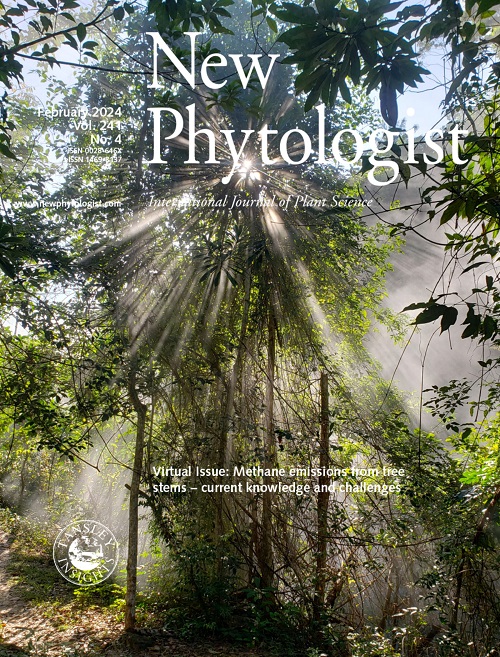Orosomucoid proteins limit endoplasmic reticulum stress in plants
IF 8.1
1区 生物学
Q1 Agricultural and Biological Sciences
引用次数: 0
Abstract
- Sphingolipids are cell membrane components and signaling molecules that induce endoplasmic reticulum (ER) stress responses, but the underlying mechanism is unknown. Orosomucoid proteins (ORMs) negatively regulate serine palmitoyltransferase activity, thus helping maintain proper sphingolipid levels in humans, yeast, and plants.
- In this report, we explored the roles of ORMs in regulating ER stress in Arabidopsis thaliana.
- Loss of ORM1 and ORM2 function caused constitutive activation of the unfolded protein response (UPR), as did treatment with the ceramide synthase inhibitor Fumonisin B1 (FB1) or ceramides. FB1 treatment induced the transcription factor bZIP28 to relocate from the ER membrane to the nucleus. The transcription factor WRKY75 positively regulates the UPR and physically interacted with bZIP28. We also found that the orm mutants showed impaired ER-associated degradation (ERAD), blocking the degradation of misfolded MILDEW RESISTANCE LOCUS-O 12 (MLO-12). ORM1 and ORM2 bind to EMS-MUTAGENIZED BRI1 SUPPRESSOR 7 (EBS7), a plant-specific component of the Arabidopsis ERAD complex, and regulate its stability. These data strongly suggest that ORMs in the ER membrane play vital roles in the UPR and ERAD pathways to prevent ER stress in Arabidopsis.
- Our results reveal that ORMs coordinate sphingolipid homeostasis with ER quality control and play a role in stress responses.
Orosomucoid蛋白限制植物内质网应激
鞘磷脂是诱导内质网(ER)应激反应的细胞膜成分和信号分子,但其潜在机制尚不清楚。类脂蛋白(ORMs)负调控丝氨酸棕榈酰转移酶活性,从而帮助维持人类、酵母和植物的适当鞘脂水平。在本报告中,我们探讨了ORMs在调节拟南芥内质网应激中的作用。ORM1和ORM2功能的丧失导致未折叠蛋白反应(UPR)的组成型激活,用神经酰胺合成酶抑制剂伏马菌素B1(FB1)或神经酰胺处理也是如此。FB1处理诱导转录因子bZIP28从内质网膜重新定位到细胞核。转录因子WRKY75正向调节UPR,并与bZIP28发生物理相互作用。我们还发现,orm突变体表现出受损的ER相关降解(ERAD),阻断了错误折叠的MILDEW抗性位点-O 12(MLO-12)的降解。ORM1和ORM2与EMS突变的BRI1抑制因子7(EBS7)结合,并调节其稳定性,EBS7是拟南芥ERAD复合物的植物特异性成分。这些数据有力地表明,在拟南芥中,内质网膜中的ORM在UPR和ERAD途径中发挥着至关重要的作用,以防止内质网应激。我们的研究结果表明,ORMs协调鞘脂稳态与ER质量控制,并在应激反应中发挥作用。
本文章由计算机程序翻译,如有差异,请以英文原文为准。
求助全文
约1分钟内获得全文
求助全文
来源期刊

New Phytologist
PLANT SCIENCES-
CiteScore
17.60
自引率
5.30%
发文量
728
审稿时长
1 months
期刊介绍:
New Phytologist is a leading publication that showcases exceptional and groundbreaking research in plant science and its practical applications. With a focus on five distinct sections - Physiology & Development, Environment, Interaction, Evolution, and Transformative Plant Biotechnology - the journal covers a wide array of topics ranging from cellular processes to the impact of global environmental changes. We encourage the use of interdisciplinary approaches, and our content is structured to reflect this. Our journal acknowledges the diverse techniques employed in plant science, including molecular and cell biology, functional genomics, modeling, and system-based approaches, across various subfields.
 求助内容:
求助内容: 应助结果提醒方式:
应助结果提醒方式:


